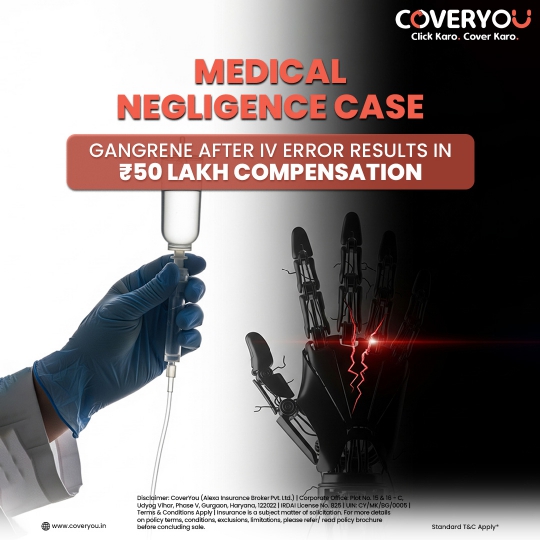On July 1, 2024, India replaced the colonial-era Indian Penal Code (IPC) with a new criminal framework known as the Bharatiya Nyaya Sanhita (BNS). The introduction of the BNS marks one of the most significant legal overhauls in independent India’s history. Among its various provisions, Section 106 of the Bharatiya Nyaya Sanhita has emerged as a key area of concern for healthcare professionals, particularly doctors involved in procedural care.
This section revisits how the law interprets deaths caused by rash or negligent acts, with explicit mention of situations arising during medical procedures. Given the sensitivity of clinical decision-making, especially in emergency or high-risk settings, Section 106 has sparked considerable discussion within the medical and legal communities.
What has replaced the IPC, and why now?
The Indian Penal Code (IPC), originally drafted in 1860 under British rule, had long been criticised for its outdated language, colonial underpinnings, and procedural rigidity. In response, the Government of India introduced the Bharatiya Nyaya Sanhita (BNS), aiming to modernize criminal law and align it more closely with contemporary societal norms and judicial practices.
The new framework retains several foundational legal concepts but updates specific definitions, procedural timelines, and punitive structures. For medical professionals, Section 106 of the Bharatiya Nyaya Sanhita directly corresponds to Section 304A of the IPC, which previously addressed cases of death due to rash or negligent acts, including those occurring in medical settings.
What does Section 106 of the Bharatiya Nyaya Sanhita state?
Section 106 of the Bharatiya Nyaya Sanhita deals with cases where an individual causes death due to a rash or negligent act, not amounting to culpable homicide. The updated law introduces a structured bifurcation:
1: For the general public, punishment can extend up to five years of imprisonment, along with a fine.
2: When a medical professional commits such an act during a medical procedure, the punishment is capped at two years of imprisonment, also with a fine.
Notably, the law makes imprisonment mandatory, an escalation from the IPC, where a fine alone could be considered sufficient punishment in some cases. This shift has raised apprehensions within the medical fraternity about increased legal exposure, even in situations involving complex, high-risk procedures.
How is this different from the earlier IPC framework?
Under Section 304A of the IPC, the punishment for causing death by negligence was imprisonment up to two years, a fine, or both. The provision applied uniformly to all individuals; doctors were not singled out, but neither were they explicitly considered in a differentiated context.
The BNS introduces two changes:
1: Higher punishment (up to five years) for the general public.
2: Specific mention and relatively reduced sentence (up to two years) when the act involves a doctor performing a medical procedure.
While on paper this seems to acknowledge the distinctive nature of clinical practice, the medical community has expressed concerns that codifying such differentiation also introduces new layers of legal vulnerability, particularly given the wide scope of what may be interpreted as “negligent.”
How are deaths evaluated under this section?
It’s important to clarify that Section 106 applies only when a patient dies as a result of a proven rash or negligent act during a medical procedure. Routine clinical errors, bad outcomes despite best efforts, or unforeseen complications do not automatically qualify. To hold a doctor criminally liable under Section 106, the court must be satisfied that:
1: The act was negligent or rash to a criminal degree
2: The act directly caused the patient’s death
3: There is sufficient medical and factual evidence to support the claim
In legal terms, the standard of proof remains “beyond a reasonable doubt,” and the burden lies with the prosecution.
Are there other legal safeguards for doctors within the BNS?
Yes. While Section 106 has drawn attention, other parts of the Bharatiya Nyaya Sanhita attempt to introduce balance and nuance.
1: Section 18 states that an act is not an offence if it was done accidentally, with appropriate care, and without criminal intent.
2: Section 19 protects acts done in good faith, even if they involve potential harm, provided they aim to prevent a greater danger.
3: Sections 26 and 30 acknowledge consent, good faith, and incapacity of the patient, and offer legal support to doctors performing procedures under such conditions.
These sections serve as important tools for legal defence in genuine cases of clinical complication, where criminality is absent and the intention was therapeutic.
What are the implications for practicing doctors?
The main concern is the shift from discretionary to mandatory punishment. Previously, a magistrate could choose between a fine and imprisonment, depending on the facts. Under Section 106, imprisonment is no longer optional even when the accused is a registered and qualified doctor performing an accepted medical procedure.
This could potentially:
1: Discourage doctors from taking up complex or high-risk cases
2: Encourage defensive medicine, leading to unnecessary investigations or referrals
3: Increase stress and legal anxiety, especially in government hospitals and emergency settings where consent procedures are often informal or delayed
What is the way forward?
While the Bharatiya Nyaya Sanhita attempts to bring legal clarity, its rollout must be accompanied by judicial training, awareness among law enforcement, and safeguards for clinical practice. Medical associations such as the Indian Medical Association (IMA) have called for:
1: Mandatory expert committee reviews before any criminal complaint against a doctor proceeds
2: Clear differentiation between civil medical negligence and criminal liability
3: Protection against harassment in cases where treatment was administered in good faith and emergency
Ultimately, the challenge is to balance patient rights with professional protections, a task that goes beyond legislation and into medical ethics, judicial discretion, and systemic reform.
Conclusion
The transition from the Indian Penal Code to the Bharatiya Nyaya Sanhita represents a defining moment for India’s criminal justice system. For medical professionals, Section 106 of the Bharatiya Nyaya Sanhit. Brings recognition and risk. While it attempts to address the complexity of clinical work, its real-world application must be handled with care to avoid creating a culture of fear in an already high-pressure profession.
Doctors are not above the law, but neither should they be left without reasonable legal safeguards. As the new legal landscape unfolds, continued dialogue between the judiciary, legislature, and medical community will be essential.
















